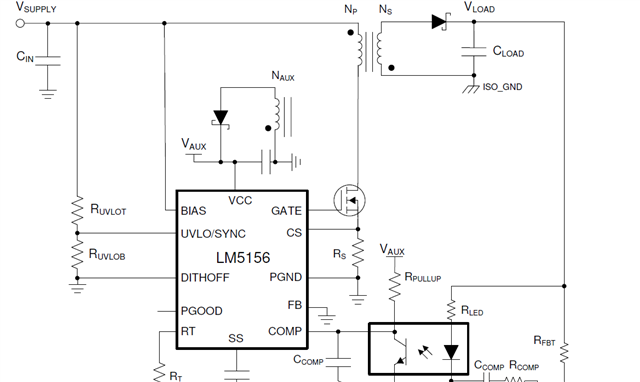Other Parts Discussed in Thread: PMP22764,
Hi Team,
We are using LM51561HPWPR into our design to generate isolated 52V from 24V input power supply. LM51561HPWPR EVAL user manual shows that the VCC pin is connected with Auxilary winding of the flyback transformer.

Other reference design such as PMP22764 which uses LM51551DSSR shows that the VCC pin is connected with Auxilary winding of the flyback transformer. Below is the link for the PMP22764 ref. design-
https://www.ti.com/tool/PMP22764
Into the datasheet of LM51561H and LM51551D it is mentioned that the VCC is the output of the internal power regulator. Please refer to below image-

Below are our queries-
1) Why VCC pin is connected to Auxilary winding of the flyback transformer? As per description into datasheet VCC is an output pin.
2) For isolated DC-DC design what is the recommended way to use the VCC pin of LM51561H?
Regards,
Aditya

